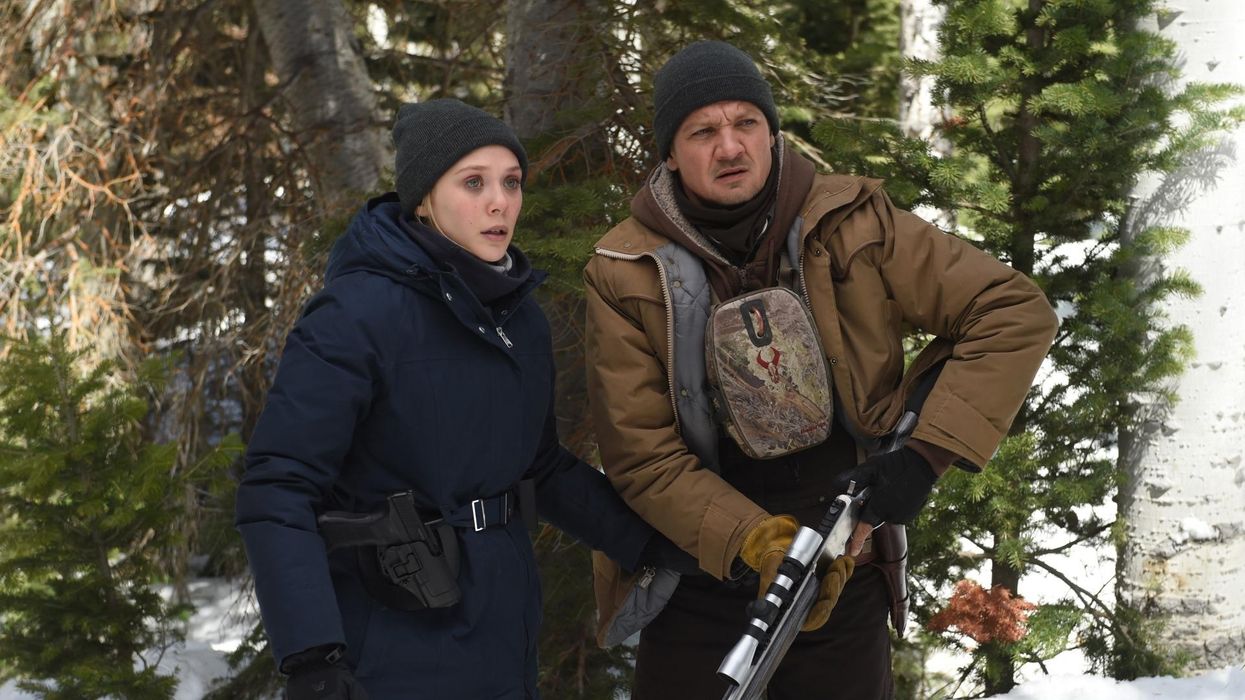Watch: How 'Wind River' Director Taylor Sheridan Reinvented the Neo-Western
Filmmaker Taylor Sheridan has identified and perfected the traits of a Neo-Western.

For as long as film has been recognized as a prominent artform in the United States, Westerns have remained an important part of its upkeep. The myths of the Frontier and Wild West loom large in the collective unconscious of the nation, serving as symbols of both American adventurism and a can-do spirit. The genre also represents deep wells of violence, subjugation, and poverty that affect the nation's perception of itself even 125 years after Jesse James was assassinated by the coward Robert Ford.
Much like another American standby genre that's grown increasingly dark and pessimistic regarding human nature (the comic book superhero film), the Western has changed since The Great Train Robbery. Wind River director and Sicario writer Taylor Sheridan is at the forefront of the latest permutation of the Western—deemed the Neo-Western—and in the video below, Jack's Movie Reviews tries his hand at defining what this new hybrid genre is.
The most identifiable trait of a Neo-Western are its contemporary settings. As a result, they also tend to possess a bleaker view of human nature and a more realistic aesthetic depicting modern rural life. This shift began in the 1960s, with Sam Peckinpah's "revisionist" western The Wild Bunch, arguably the first example of a Western portraying the ugly, murderous side of a formerly romanticized, big open country. Bunch fits in with the Bonnie and Clydes and Easy Riders of the period, reworking old genres for a newly turbulent time.
Sheridan, a Texas native, has called writing Hell or High Water "a very personal exploration of a way of life...it lent itself to some pretty harsh studies of us as a people, our relationships to people of different genders and races."
Another key feature of the Neo-Western is that it exposes American filmgoers, most of whom live in large cities or suburbs (the last census data put the number of people living in "rural areas" at about 47 million, or roughly 1/6th of the nation's population) to a world most have never experienced. Like the characters in old Westerns, the men and women who populate Sheridan's films are, to a large extent, unknown to their fellow Americans. The key difference is that these people aren't from the distant past but rather residents of the 21st century. In a country that is almost entirely on the grid, the characters in these films live, in Jack's words, "in desolate locations, far from urban areas, and out of bounds with a lot of the laws that everyone else follows." The side effect is that the overwhelming presence of nature adds a sense of "moral ambiguity" to the films.
Of course, Westerns remain an inherently romantic genre, regardless of how bleak things may get. The American psyche secretly wishes for the prelapsarian frontier, where people were free to pursue their own quixotic ends. Even if their lives aren't very fufilling, the anxiety plaguing much of the culture makes the concept of a hinterland attractive.
"These characters live in desolate locations, far from urban areas, and out of bounds with a lot of the laws that everyone else follows." -Taylor Sheridan
Even if these films are decidedly different in character than the Westerns of yore, there are similarities. They fulfill a decidedly modern desire for something more "authentic," freer than the increasingly crowded and harried lives encompassing traffic jams, mega-malls, and too many people. While the tendency to romanticize the "real America" is always there, Sheridan's work never looks down on those whose stories are being told. That's one major reason for his success: as a native of the region who cares about rural America, he's in a unique position to represent it on screen.
In an interview with The New York Times, Sheridan, who employs non-traditional structure and a character-based storytelling approach, explains how he grew up in a house without television or stereo and admits he would probably still live in that house had his parents not lost it in the 1990s. He is a unique voice in cinema, bringing a fine-tuned eye and ear to the stories of a place existing only on movie screens. By subverting the tropes of the genre, the Neo-Western brings humanity to America's most rural areas, shedding light on the long desert shadows that still haunt the American mind.
Do you agree with this classification of the Neo-Western? Are there other films that serve as a good representation of the genre? Let us know in the comments below.
Source: Jack's Movie Reviews













